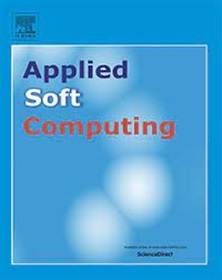随机跳跃扩散过程通知神经网络在数据稀缺条件下的美式期权准确定价
IF 6.6
1区 计算机科学
Q1 COMPUTER SCIENCE, ARTIFICIAL INTELLIGENCE
引用次数: 0
摘要
在跳跃扩散模型(如Merton模型)下为美国期权定价,由于早期行使特征和潜在价格不连续而面临重大挑战。本文介绍了一种将默顿偏积分微分方程(PIDE)嵌入其损失函数的基于物理信息的神经网络(PINN)框架,用于美式期权定价。通过将稀疏的市场数据与金融物理相结合,该模型在有限的训练样本下实现了稳健的定价准确性。我们从lsamvy过程中给出了Merton PIDE的严格推导,并证明了在标准假设下,Merton PIDE收敛于真实期权价格。从2023年6月到2024年9月对SPY和AAPL期权数据集的实证评估表明,PINN Merton显著优于传统的参数模型(如二项树、默顿跳跃扩散)、数据驱动基线(如Transformer、Neural Network、XGBoost)和Black-Scholes公式下的PINN,特别是在数据稀缺的情况下。在只有200个训练样本的情况下,PINN Merton获得了最佳性能,SPY看涨期权的R2为0.9899(传统二项树为0.9654,PINN BS为0.9617),SPY看跌期权的R2为0.9933(变压器为0.9924),AAPL看涨期权的R2为0.9897(变压器为0.9822)。这些结果强调了该模型在期权类型和标的资产之间的有效性和普遍性。本文章由计算机程序翻译,如有差异,请以英文原文为准。

Stochastic jump diffusion process informed neural networks for accurate American option pricing under data scarcity
Pricing American options under jump diffusion models, such as the Merton model, presents significant challenges due to the early exercise feature and underlying price discontinuities. This paper introduces the PINN Merton model, a Physics-Informed Neural Network (PINN) framework that embeds the Merton partial integro differential equation (PIDE) into its loss function for American options pricing. By integrating sparse market data with financial physics, the model achieves robust pricing accuracy with limited training samples. We provide a rigorous derivation of the Merton PIDE from the Lévy process and prove the convergence of PINN Merton to the true option price under standard assumptions. Empirical evaluations on SPY and AAPL option datasets from June 2023 to September 2024 demonstrate that PINN Merton significantly outperforms traditional parametric models (e.g., Binomial Tree, Merton Jump Diffusion), data-driven baselines (e.g., Transformer, Neural Network, XGBoost), and PINN under the Black–Scholes formula (PINN BS), particularly in data-scarce scenarios. With only 200 training samples, PINN Merton achieves best performance, yielding an R2 of 0.9899 for SPY Calls (vs. 0.9654 for traditional Binomial Tree and 0.9617 for PINN BS), R2 of 0.9933 for SPY Puts (vs. 0.9924 for transformer), and R2 of 0.9897 for AAPL Calls (vs. 0.9822 for transformer), respectively. These results underscoring the model’s effectiveness and generalizability across option types and underlying assets.
求助全文
通过发布文献求助,成功后即可免费获取论文全文。
去求助
来源期刊

Applied Soft Computing
工程技术-计算机:跨学科应用
CiteScore
15.80
自引率
6.90%
发文量
874
审稿时长
10.9 months
期刊介绍:
Applied Soft Computing is an international journal promoting an integrated view of soft computing to solve real life problems.The focus is to publish the highest quality research in application and convergence of the areas of Fuzzy Logic, Neural Networks, Evolutionary Computing, Rough Sets and other similar techniques to address real world complexities.
Applied Soft Computing is a rolling publication: articles are published as soon as the editor-in-chief has accepted them. Therefore, the web site will continuously be updated with new articles and the publication time will be short.
 求助内容:
求助内容: 应助结果提醒方式:
应助结果提醒方式:


